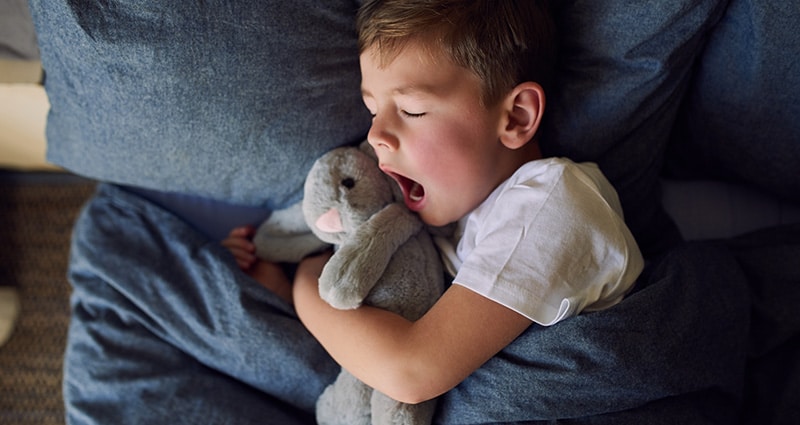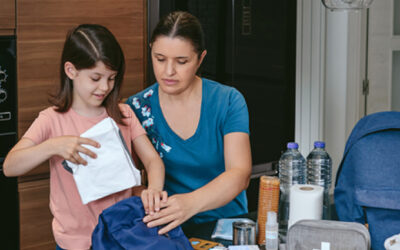From toddlerhood to teenagers, sleep is a constant worry for parents. Are they sleeping too little? Too much?
In the quest for bedtime tranquility, melatonin may be seen as an easy fix. But what do parents really need to know about the increasingly prevalent sleep aid? You have questions, and we have answers.
Jessica Brown, DO, MPH, triple Board Certified in pediatrics, pediatric pulmonology and sleep medicine, offers her expertise about using melatonin. Her best advice comes back to good sleep hygiene for everyone in the family.
How Does Melatonin Work?
Melatonin, often dubbed the “sleep hormone,” plays a pivotal role in regulating our internal clock. Melatonin is a hormone our bodies naturally produce, signaling when it’s time to sleep.
When it comes to melatonin supplements, “Only one in five people responds to melatonin or finds it helpful in falling asleep,” Dr. Brown says. “Some data shows melatonin can help some kids fall and stay asleep, but those are often more medically complex children.”
What to Look For
Melatonin supplements are not regulated by the FDA, but Dr. Brown recommends parents who do want their children to take it look for bottles with USP on the label. That means it was made following the standards of the United States Pharmacopeia.
As with all medicines, store melatonin in a safe place, away from children. Always read and follow the instructions on the label. And if you have questions, connect with your pediatrician.
How Much for Dosing?
As with any medication, use the lowest dose needed.
“Specialists at Brown University suggest 0.5 to 1 milligram should do the trick,” Dr. Brown says. “I usually recommend 1 milligram up to 6 milligrams in kids, occasionally up to 10 milligrams in kids with autism.”
However, pushing up the dose doesn’t usually change how it works for any given child. “Melatonin either helps or it doesn’t,” she says. And melatonin is not a substitute for a good bedtime routine.
A Family’s Best Bet
“Most kids shouldn’t need medication to get to sleep,” Dr. Brown says. “They need set routines with good sleep hygiene.”
Dr. Brown’s sleep hygiene checklist includes:
- Have the same bedtime routine every night.
- For younger children, consider making a bedtime routine chart.
- No TV or electronics in bedrooms.
- No electronics for one to two hours before bedtime.
- Do not put the child into bed until they are sleepy/ready to fall asleep. This may mean 11 p.m. or midnight. Wake up the child every day by 7 a.m. (no later than 8 a.m. on weekends).
- Shift bedtime earlier 15 minutes each night until goal bedtime of 8 or 8:30 p.m.
- Avoid naps to increase need for sleep at night. If nap is required due to behavior, set a timer and allow only one 20-minute nap each day.




